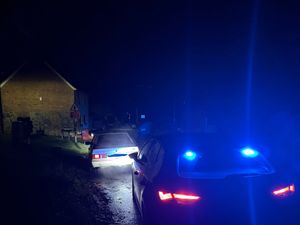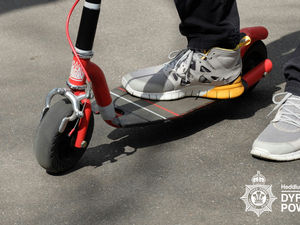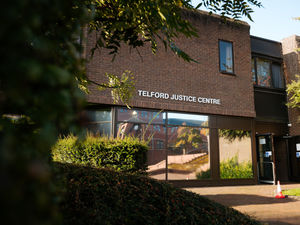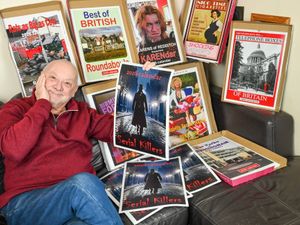How effective has the 25-year ban on pistols been since the Dunblane massacre?
Twenty-five years ago on Saturday, the Government announced its plans to ban the private possession of virtually all pistols in the wake of the Dunblane massacre. The anniversary went unmarked as the country reeled from the death of MP Sir David Amess, who had been stabbed during his constituency surgery in the quiet coastal town of Leigh-on-Sea.
A quarter of a century on, has the ban on pistols – or 'handguns' as they were popularly referred to in the tabloid press – made Britain a safer place?
When then home secretary Michael Howard announced the measures on October 16, 1996, he achieved the distinction of upsetting people on both sides of the debate.
Gun clubs accused Mr Howard of an over-reaction that would put thousands of jobs at risk, while those calling for tighter regulation criticised him for making an exception for 0.22 calibre target pistols.
The ban was introduced in response to the massacre at Dunblane Primary School on March 13 that year, when former scoutmaster Thomas Hamilton walked into the gym and killed 16 young children and their teacher. He also injured 13 other children and three teachers. Hamilton then shot himself.
Within two days of the new laws being announced, Warren Hawksley MP told a West Midland audience that the bill would be futile.
"My final point is a word of warning to the general public and to the parents of Dunblane,'' he told Bridgnorth Supper Club on October 18. 1996.
"No-one wants another Dunblane but please do not sleep any happier in your beds after the bill has gone through Parliament.
"Hopes of no more atrocities, I fear, are groundless.''
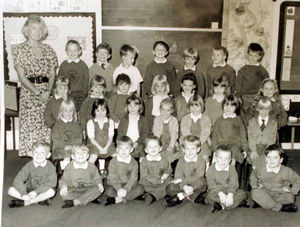
Mr Hawksley, the late Tory MP for Halesowen & Stourbridge, and who previously represented The Wrekin, was a keen clay-pigeon shooter. He said it was targeting people who enjoyed a legitimate sport, while doing nothing to deal with the four million illegally held guns on the street.
Paul Leatherdale, 38, who represented Great Britain at the 1988 Seoul Olympics, said it ruined the sport.
Ross Armstrong, owner of Medway Shooting Club in Kent said: "People are killed by drunk drivers but no-one demands a ban on cars. Further restrictions suit no-one."
But the bill was also met with fierce criticism for allowing the small-bore pistols favoured by target shooters, albeit with restrictions that they could only be kept at gun clubs. This exception was quickly reversed when Tony Blair's Labour government took office the following May, and since then the UK Olympic team had to train in Northern Ireland which was not covered by the ban.
At the time the ban was announced, Labour's shadow home secretary Jack Straw accused the Government of being slow to act, arguing that the laws should have been brought in following the Hungerford massacre in 1987, when Michael Ryan shot 16 people dead in the sleepy Berkshire town.
While opponents of the ban may have had a point about the number of illegally held guns, it was also an inescapable fact that both Hamilton and Ryan committed their crime using legally held, fully licensed firearms.
The Countryside Alliance was quick to point out that criminal use of pistols increased by 40 per cent over the two years after the new laws were introduced.
Indeed, by 2001, gun crime had actually doubled, although Prof Peter Squires, a professor of criminology at Brighton University and campaigner for tighter gun laws, points out that was largely down to the way gun-crime was recorded at the time.
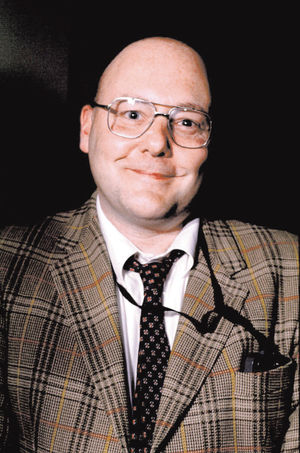
Before 2003, 'gun crime' figures included any incident where a victim reported that a gun was used, even if that gun was never fired, or was a replica. The Government responded by amending these laws, so the use of air weapons and pellet guns were placed under the auspices of the Anti-Social Behaviour Act 2003, which meant gun crime figures purely under their Firearms Act definition decreased markedly over the next 10 years.
The number of homicides by shooting is perhaps a more reliable measure, and this does appear to suggest that the laws have had some effect in making our streets safer. In 1995 there were 70 incidences of murder or manslaughter caused by shooting, but the figure rose to an all-time high of 96 in 2001/2002. After this time, the number of homicides fell steadily until June 2010, when taxi driver Derrick Bird shot 12 people dead and injured 11. Bird, who later turned the gun on himself, used a legally held rifle which was not subject to the ban. In 2010/11, 60 homicides were recorded, still lower than 1995, and in recent years the figure has stabilised at around 30 gun homicides a year. At 0.05
It is also worth bearing in mind that the same period has seen a sharp in the number of knife crimes. In 1995 there were just under 200 knife-related homicides, but the figure had risen to more than 280 by 2018. Has the banning of pistols led to an increase in knife-related incidents? Its impossible to know, but the death of Sir David Amess is a timely reminder that the tighter licensing of guns can only be part of the solution.


